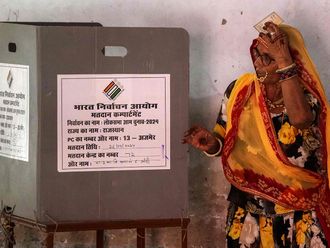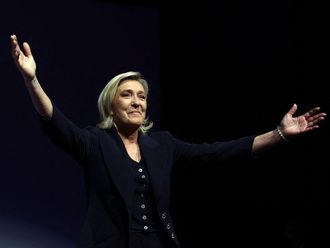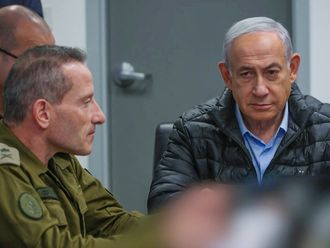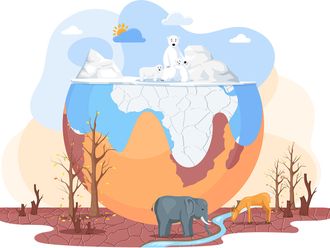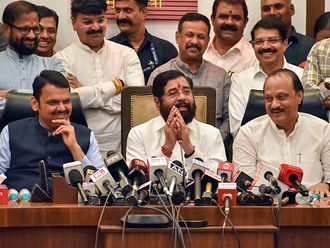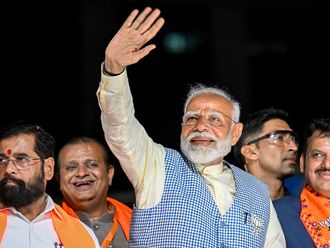
In 1973, the UAE was barely two years old, but a little known historical incident showcased a great degree of cultural maturity on its part. The protagonist in this case is a young Englishman named Paul Keeler who now goes by the name of Ahmad. Back in 1973, Keeler was a 31-year-old with a number of impressive projects under his belt. But what he was planning to do with the help of the UAE was something truly groundbreaking.
In 1967, at the age of 25, Keeler cofounded an arts collective named The Exploding Galaxy that attempted to bridge the gaps between art and life. Keeler then went on to found The Oriental Centre, Institute of Contemporary Arts and organise a US tour of Indian classical sitarist Ustad Mahmoud Mirza. By the early 1970s Keeler’s involvement with various projects linked to the Islamic world led him to conceive his most ambitious project yet, one that would attempt to showcase the width and breadth of 14 centuries of Islamic art to British audiences.
In fact, the project he envisioned was so vast that it would eclipse any similar event the world has ever seen and marked a seismic shift in the understanding of Islamic arts in Britain and beyond. According to Oliver James Watson, I.M. Pei Professor of Islamic Art and Architecture at Oxford, only two exhibitions came close in scale and ambition to what would be known as the World of Islam Festival. The first was the “Meisterwerke muhammedanischer Kunst” (Masterpieces of Mohammedan art) exhibition that took place in Munich in 1910 and the second was International Exhibition of Persian Art that was held in London in 1931 but it had only dealt with Iran.
There was one major problem though: Keeler had no money to fund such an endeavour. He had invested all his funds in an art gallery that had gone bust although it did provide him with an invaluable learning experience. Keeler’s first step to realise his dream project was to gain approval of the influential Arts Council of Great Britain, a public body set up in the wake of the Second World War to support the fine arts in Great Britain. A series of fortunate events allowed Keeler to realise his project.
At first he had met with some challenges in obtaining the backing of the Council, however in 1972 a new chairman had been appointed who had welcomed the proposal and offered their much coveted backing. Keeler, now armed with an official acknowledgment of the project, was ready to approach potential backers. What he needed now was what is known in the arts world as an anchor supporter, one that would cover a significant portion of the costs.
Key meetings
The process of raising funds for such a monumental programme would not only be time consuming but also an uncertain outcome as nothing of the sort has been attempted before. Keeler opted to approach the embassy of a new country called the United Arab Emirates that was only founded 18 months or so before. The country was so new that its then ambassador to the UK Mahdi Al Tajir also served as a non-resident ambassador to France and a number of other European countries.
Al Tajir, a close associate of former ruler of Dubai, Shaikh Rashid Bin Saeed Al Maktoum, was a very accomplished statesman and diplomat who had previously headed the Dubai Customs department and later played a role in the formation of the UAE. Not only was Keeler’s attempt to secure a meeting with Ambassador Al Tajir successful, serendipitously at the time of the meeting one of the most important men of the UAE happened to be in the embassy building.
Ahmad Khalifa Al Suwaidi, the first UAE foreign minister, and close to the UAE’s founding father Shaikh Zayed Bin Sultan Al Nahyan was visiting London at the time and both he and Ambassador Al Tajir ended up meeting the young Englishman. Keeler, now in a room with the top two diplomats of the UAE, went about explaining to the two dignitaries the importance of the monumental exhibition he was proposing and the significant amount of funding it would need to be realised.
“Two million pounds” is the figure that he quoted then, the equivalent of £13.5 million (Dh66.5 million) in 2017. Keeler was astounded by the reaction of the diplomats, rather than commit a small portion of the cost, or even turn him away they warmly welcomed the proposal and Ambassador Al Tajir offered to fund half of the cost and guarantee a further £500,000. The backing of the UAE embassy to the tune of 75 per cent of the cost of the exhibitions meant that other embassies including that of Kuwait and the Kingdom of Saudi Arabia were encouraged to also lend support.
What makes this cultural patronage even more impressive is the year in which it occurred. 1973 was a particularly difficult year for the fledgling federation because of the Arab-Israeli War and its repercussions. Back then the Arab members of the Organisation of Petroleum Exporting Countries, of which the UAE is still a member, decided to halt sales of oil in protest of the West’s support for Israel. Shaikh Zayed’s famous statement then was that “Arab oil is not dearer than Arab blood.” That suspension of sales naturally affected the hard currency income of these states and many projects were suspended or delayed, but fortunately the funding for the World of Islam Festival came through. Ultimately not only did the UAE fund the festival, the UAE’s Ambassador to Britain Mahdi Al Tajir even served as the Vice-Chair of the event and personally supported the programming.
After several years of planning, the World of Islam Festival was inaugurated by Queen Elizabeth in the Spring of 1976, the year after Keeler’s conversion to Islam. The series of exhibitions performing arts, films and lectures was the largest exploration of the arts, culture and civilisation of Islam ever staged anywhere on Earth. World of Islam Festival was so vast it brought together 6,000 objects from 250 public and private collections from over 30 countries. The Festival ran for many months with different openings at various British institutions including the Victoria and Albert Museum, the Hayward Gallery, the Horniman Museum, the Science Museum, the Museum of Mankind, the Royal Scottish Museum, the Architectural Association, the Commonwealth Institute, the Albert Hall and the Royal Festival Hall as well as in universities such as Oxford, Cambridge, London, Manchester, Warwick, Durham, Exeter, Edinburgh and the School of Oriental and African Studies. According to Keeler, Shaikh Zayed himself even inaugurated one of the festival openings during a visit to the UK in 1976.
Ahmad Paul Keeler is today a Visiting Fellow, Centre of Islamic Studies, University of Cambridge where we met following a lecture I delivered in November 2017. He spoke gently and fondly of role the young nation of the UAE played in the success of one of the biggest artistic events the world has even seen. He was also very proud of the role he and the UAE played in realising the World of Islam Festival and so should we all be.
Sultan Sooud Al Qassemi is a UAE-based writer.


